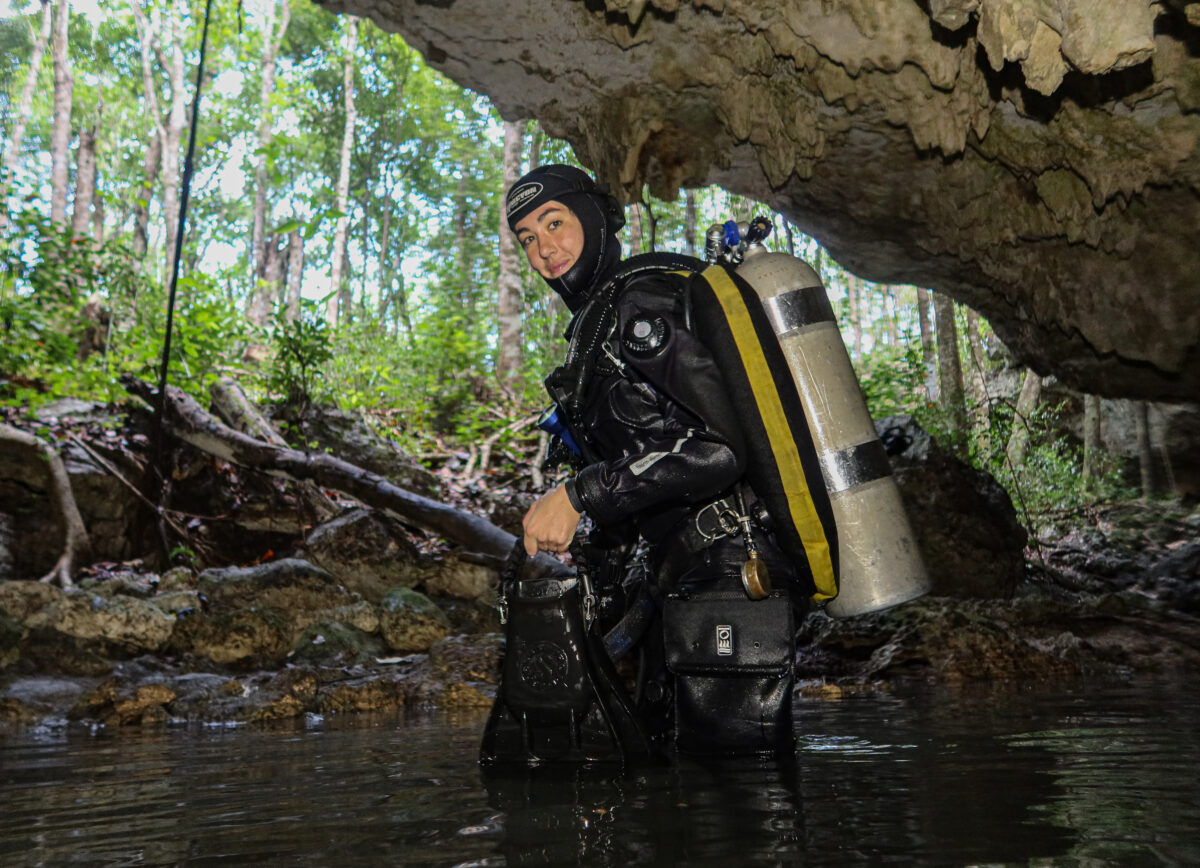
Underground flooded caves act like the veins of the land, networks of waterways that transport minerals and nutrients through the earth and to the sea.
I first became fascinated in the science of caves after hearing about how it may be possible to establish protected areas inland by mapping out cave systems and recording and reporting on their links and impact on marine ecology.
Over the past year I have learned more and more about the interconnectivity of the world, how everything, including ourselves are intrinsically connected by the ocean. Cave systems are the perfect example of this, when we are inland and seemingly far from the sea it might be hard to imagine that something we do here could impact the ocean so far away.

The life that evolves to exist in these systems has some of the most fascinating adaptations to life in the dark. As a budding benthic ecologist I was dreaming to explore these cave systems for myself and learn more about how they are formed and what are the impacts that we as humans are having on these systems. Following this interest, I headed to the Yucatan Peninsula in Mexico to begin my initial training on a GUE Cave 1 Course with the brilliant Annika Persson.
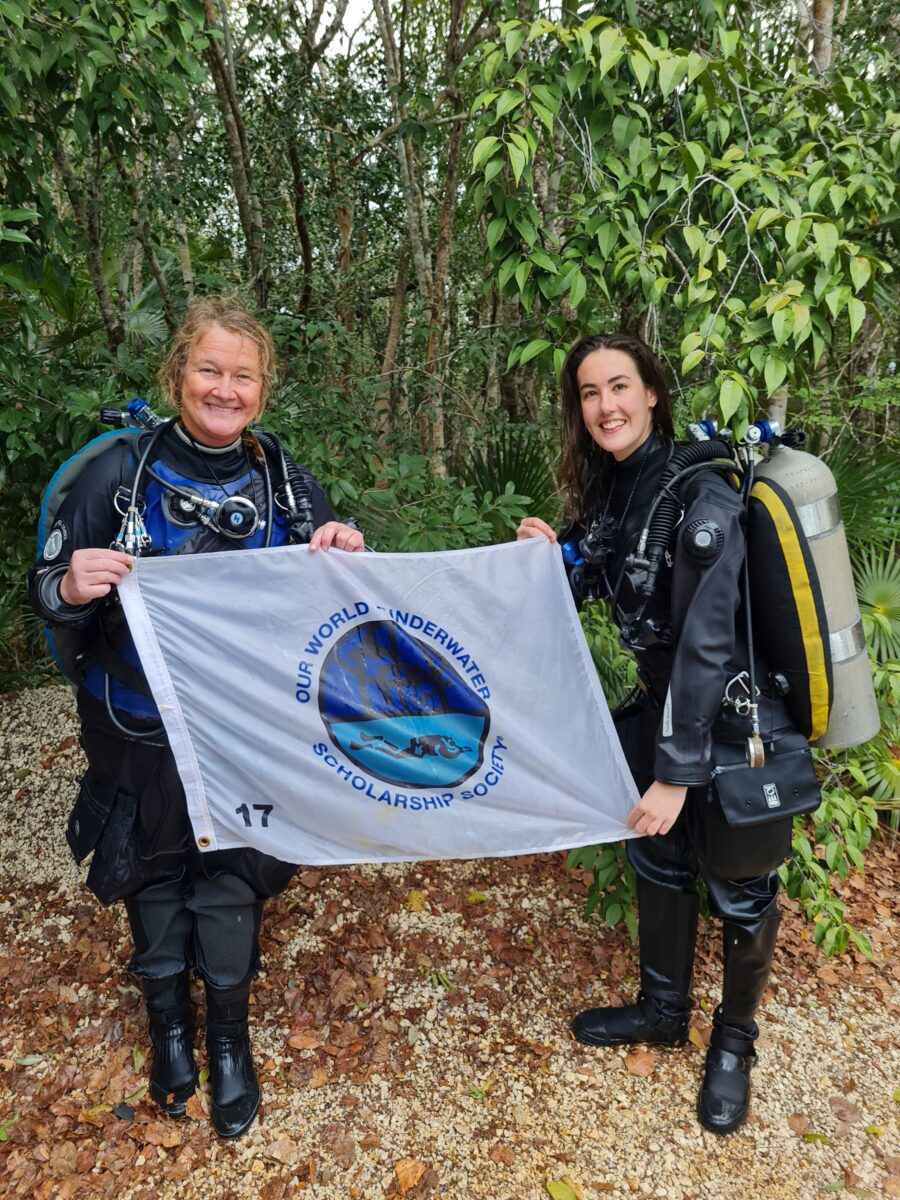
Cave diving can be one of the most challenging and technical forms of diving, so I knew that going into this course that I would be testing my abilities and pushing myself to grow and improve my diving on every level.
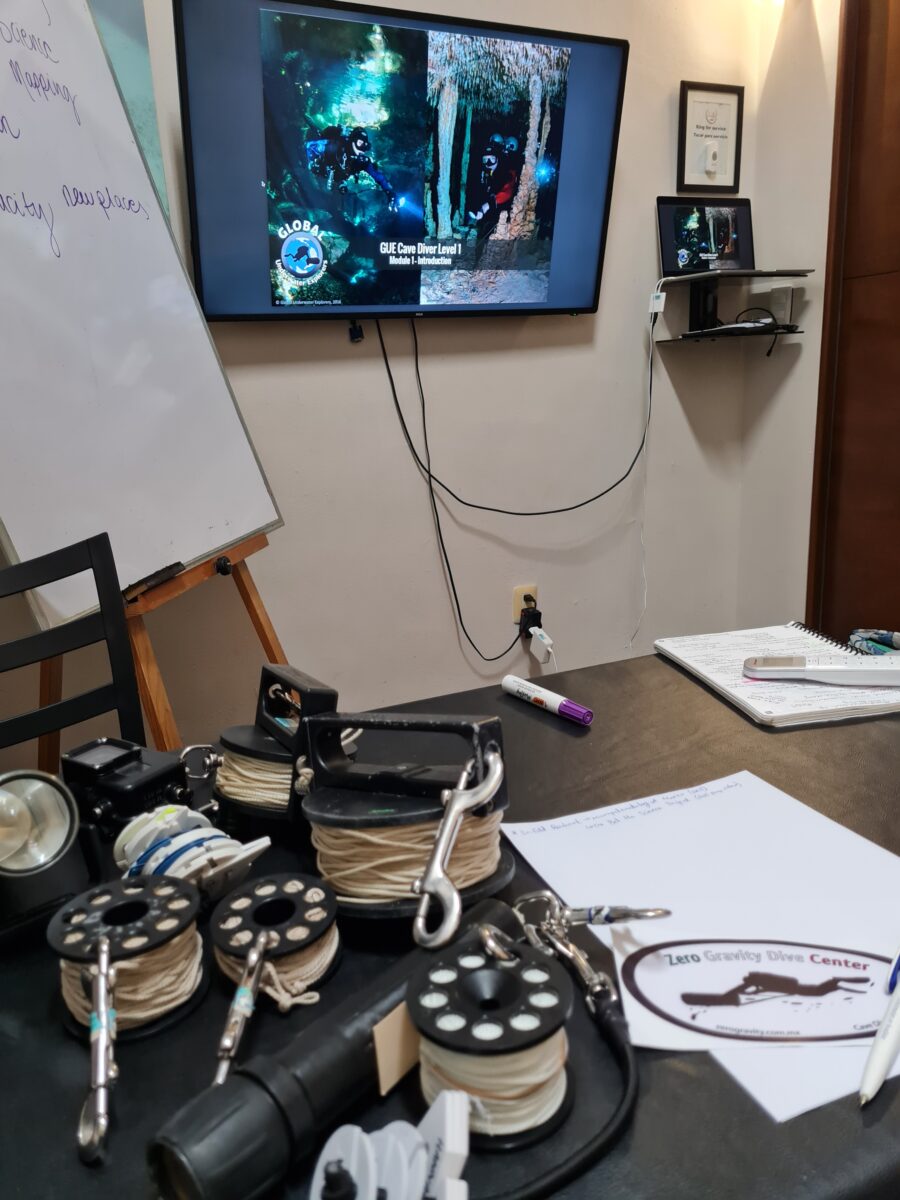
On day one we covered theory in the classroom on the science and history of caves and cave diving, reel and cave line theory and penetration gas management. It was fascinating to learn about the formation of the Yucatan Peninsula and about all of the cave systems that are still left to be explored and mapped. Our base for the course was Zero Gravity Dive centre, run by pioneering cave divers, Christophe Le Maillot and Fred Devos, who with others have explored and mapped a huge number of the cave systems in the area.
For our first session, we headed to an open water area, ‘Cenote La Orquidea’ to cover our fundamental skills. I quickly realised that having not been diving with a double set up for almost two months, I had some catch up work to do to get back into my rhythm again. But Annika soon had me back up to scratch and even by the second dive on the twinset I was feeling relaxed and easy in the water again. I adored the clarity of the water in the cenotes and the beautiful light attenuation in the cavern areas as sunlight streamed through mangrove roots.
Each morning of the course we packed the car and headed out to a new cenote through the jungle, around the trees near the cenote we practice skills and scenarios on land talking through them in detail before practicing them in the caves.
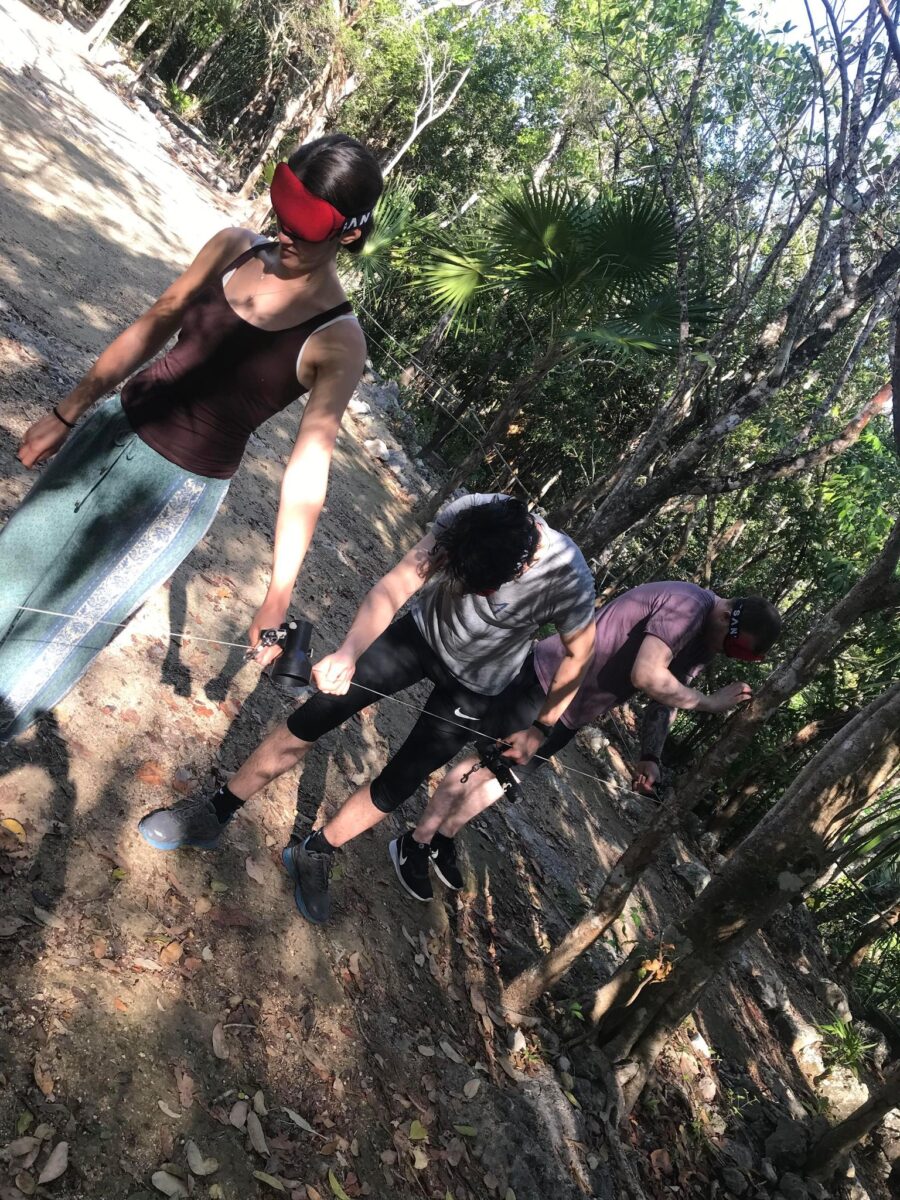
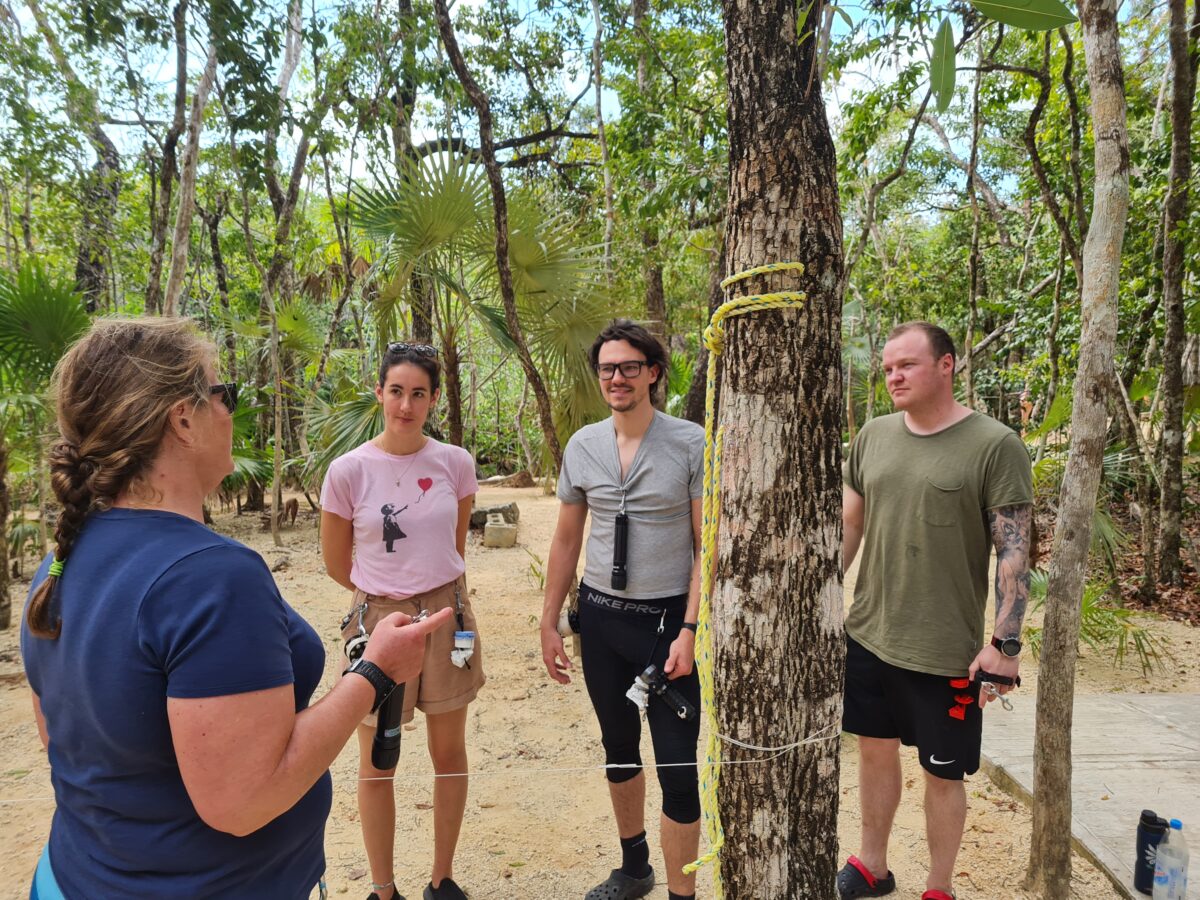
With every day, I felt myself growing in confidence with each skill and scenario we trained for. Never in a million years had I thought that I would feel comfortable managing challenging scenarios at maximum penetration in a cave system, and yet by the end of the course we had slowly built up to deal with emergencies through extensive practice and drills.
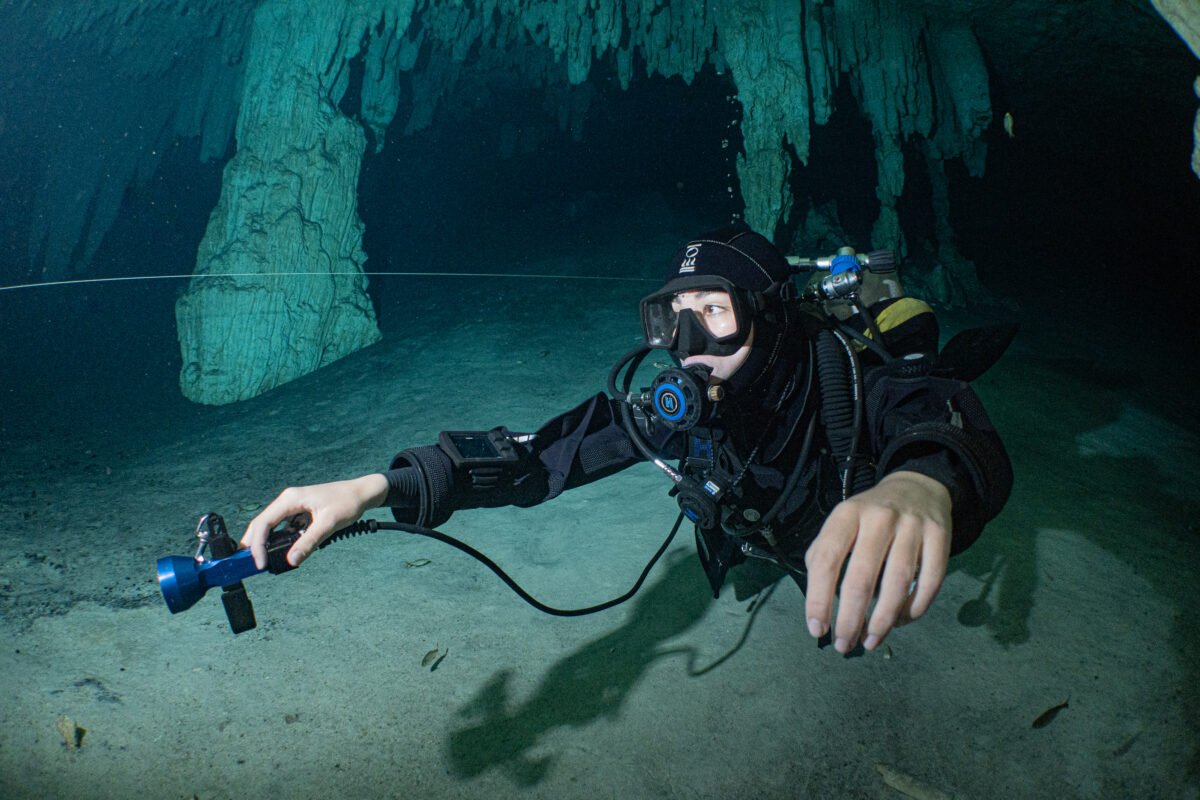
The cenotes of Mexico are fascinating ecosystems, formed by the dissolution of the limestone bedrock. The cenotes, like natural sinkholes, are found throughout the Yucatan Peninsula and through history they have provided a crucial source of freshwater for local communities. They also create important ecological hotspots by supporting a diverse array of plant and animal life. In the open areas there are a wide number of fish species like the catifish (Rhamdia guatemalensis) that live in the open areas and the troglodytic or cave dwelling blind brotula, (Typhliasina pearsei) which is endemic to southern Mexico. Inside the caves there are also a huge range of specialised creatures like shrimp, crayfish, and other crustaceans. These animals have adapted to life in a dark, nutrient-poor environment of the caves, and are a testament to the remarkable resilience and adaptability of life in the cenotes.
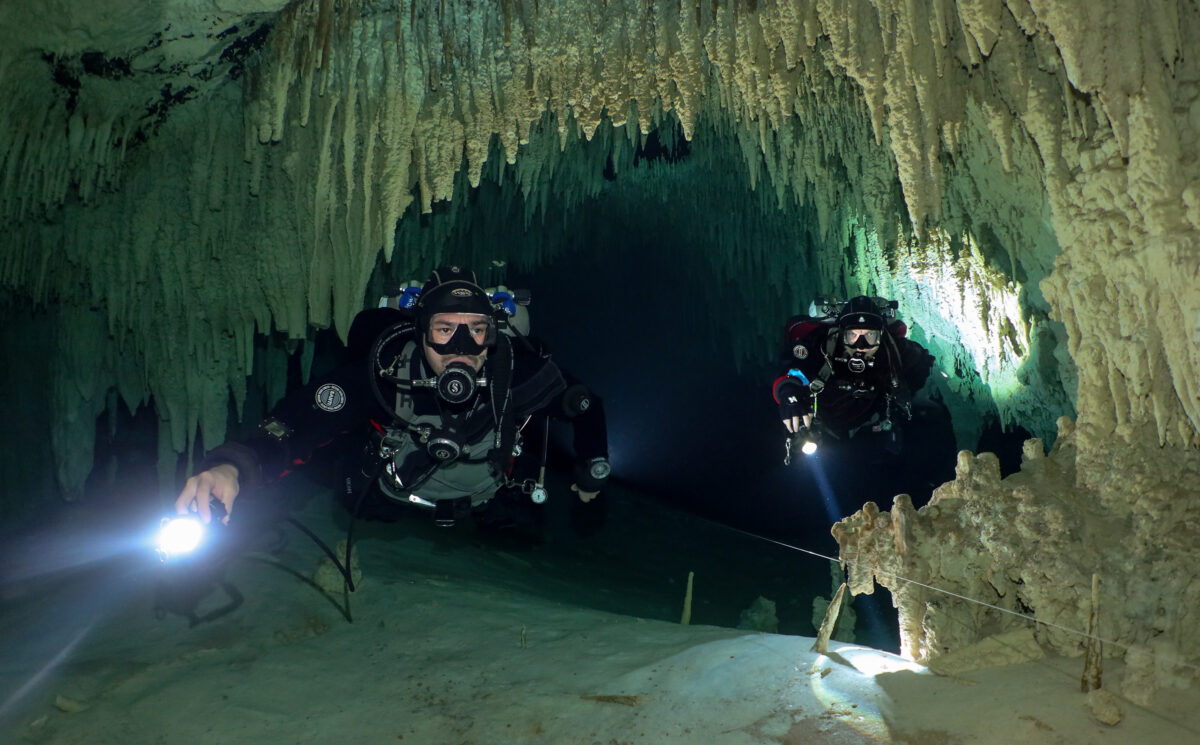
One of the most striking features of some cenotes that we explored during and after the course was the presence of a halocline. Where a layer of dense salt water flows on the bottom of the cave and a layer of cooler fresh water flows over it. Due to the density variation these two water bodies create a layer rather than mixing. Swimming through the salty water and looking up it appears as though the surface of the water is below the cave ceiling, however if you careful lift you head above the salty layer of water you are greeted by the cooler fresh water. It is an amazing sight to experience and I was very excited to observe it on several of the dives during our course.
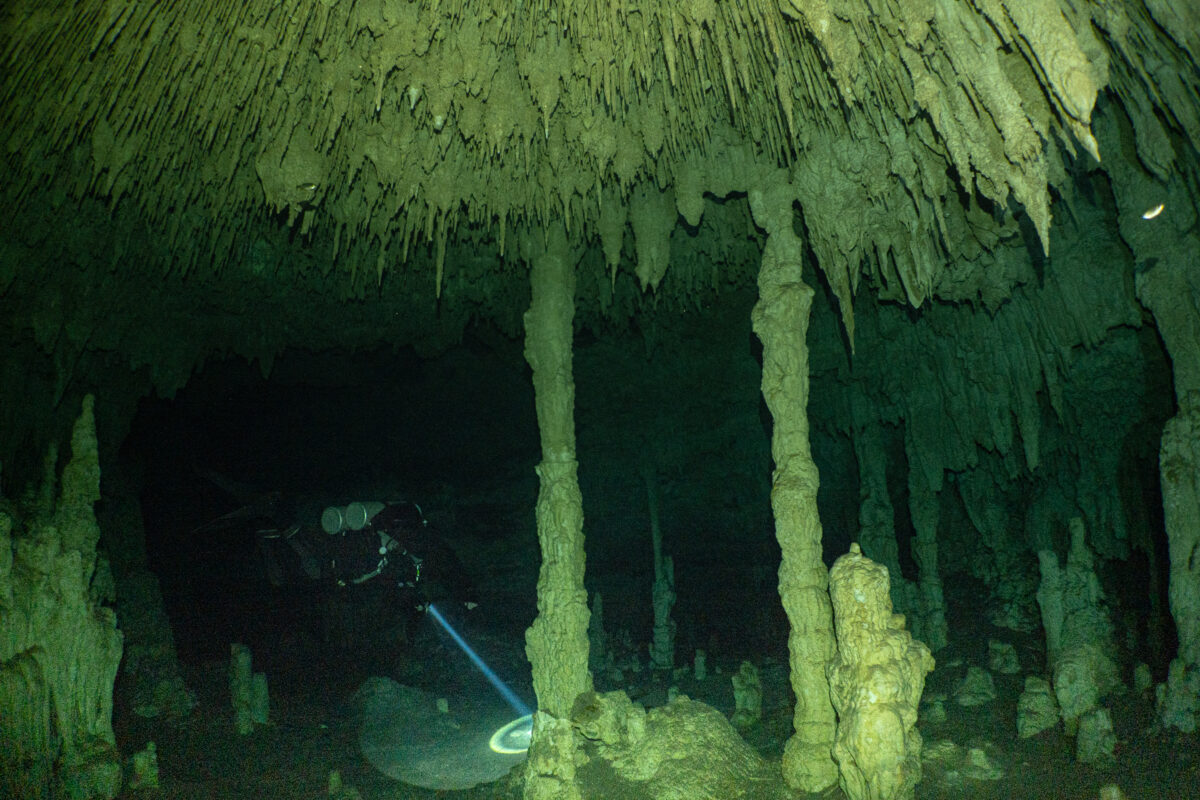
In addition the caves were full of interesting speleothems which are incredible structures formed from mineral deposits during a time when the caves were not filled with water but had a constant dripping of mineral filled water from above. I found it fascinating to observed these structures and wonder about what these cave would have been like at the time when they were dry and where the structures point to fissures and holes in the cave ceilings where water had passed through over thousands of years. The various structures have different names such flowstone, drapery, stalactites, stalagmites and columns.
It has never been more important for these cave systems to be mapped out and studies as unfortunately, the cenotes are under threat from a variety of environmental pressures. Such as pollution from agricultural runoff, tourism and new developments. There is no doubt that these are unique and important ecosystems, not just for their intrinsic value, but also for the important role they play in providing freshwater and supporting biodiversity. By understanding and appreciating the ecology of the cenotes, it becomes more possible to work to ensure their long-term survival and continue to learn from the remarkable diversity of life that they support.
If you are interested to read more, have a look at the CINDAQ Group’s 2022 Annual Report.

I would like to say a huge thank you to the amazing Annika Persson who helped me grow as a diver in so many ways and has opened the door to a whole new world of diving. Also thank you to my brilliant team mates Øystein and Reidar! Thank you also to Zero Gravity Dive Centre for hosting me and inspiring me with the work you do, and for being able to fix a broken neck seal over night, you really saved the day for me during my course!
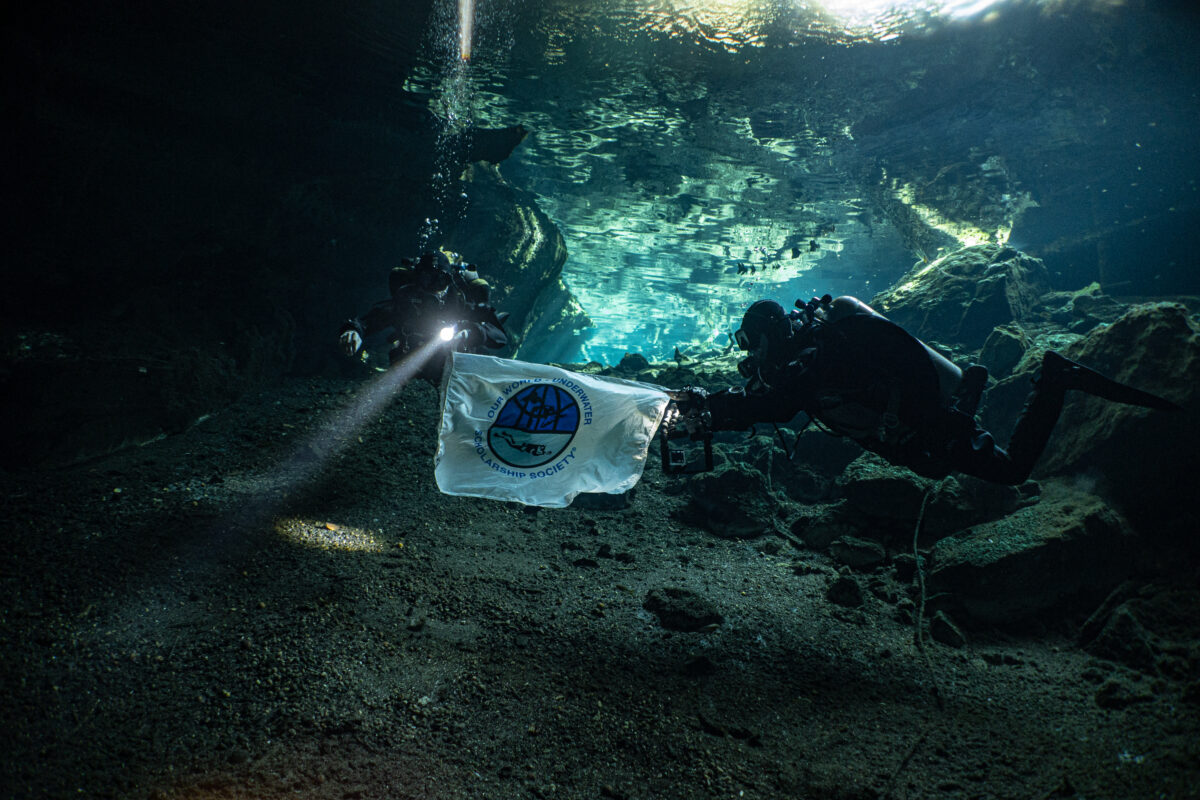
Thank you to Rolex and OWUSS for making dreams come true. Also thank you to my incredible equipment sponsors Fourth Element, Suunto, Halcyon Divesystems, Reef Photo and Video, Nauticam and Reel Diving.